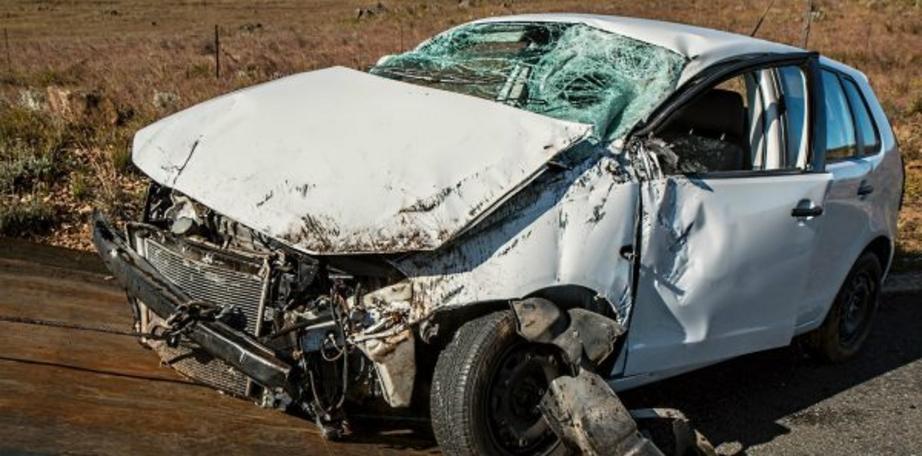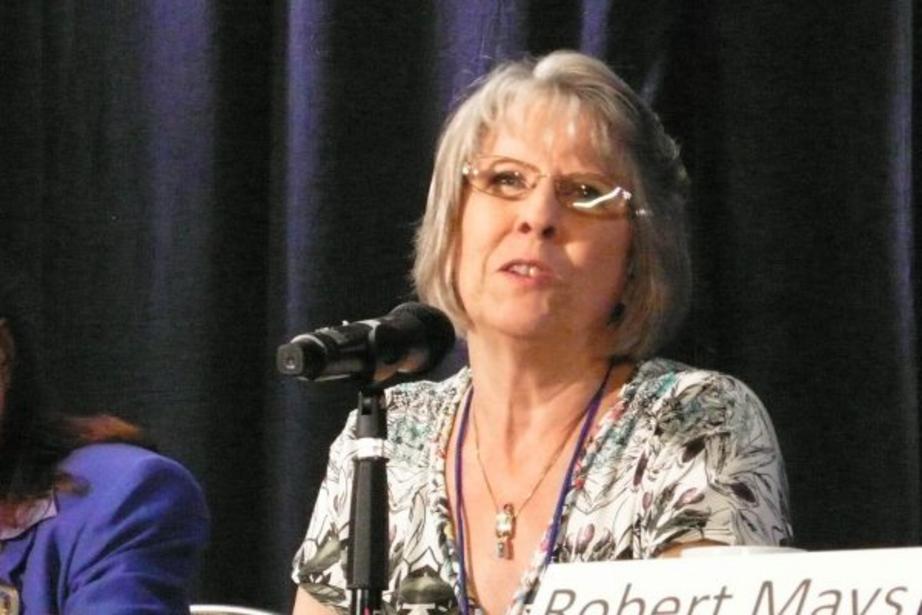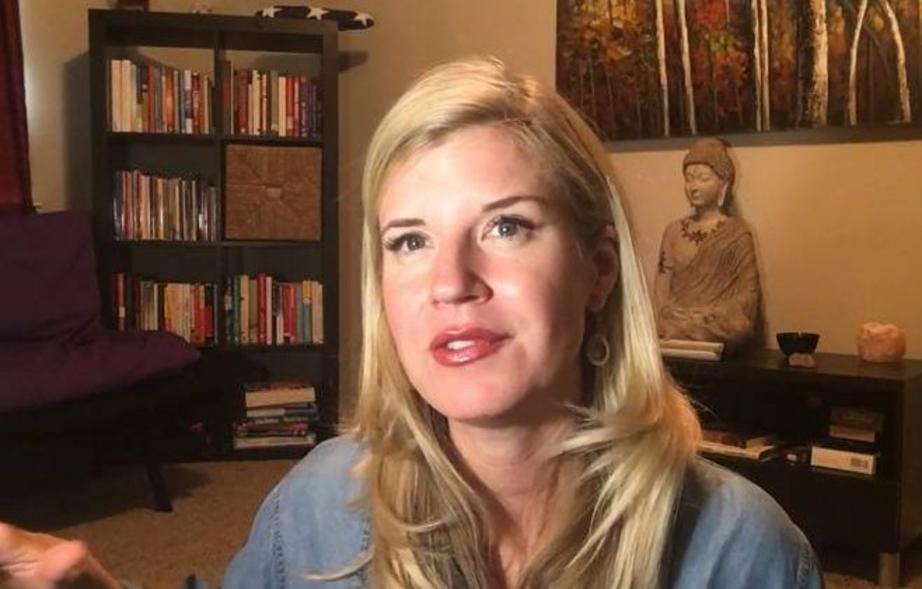Woman dies on operating table, sees heaven and future events
Tricia Barker was depressed. She was 21 years old, in college studying English, unsure what career would follow, and generally feeling that life was hopeless and painful. She tried to take her own life by washing a handful of pills down with alcohol.
She woke up 36 hours later still in her own room. She didn’t tell anyone she had attempted suicide, but decided to move forward with her life. As a symbol of getting her life back on track, she started training to run a 10-kilometer marathon.
After a suicide attempt, Barker trained to run a marathon as a way to recover from deep depression. On the way to the marathon, she had a terrible car accident.

A file photo of a car after an accident. (Steve PB)
After weeks of training she was on her way to run the marathon when she had a head-on collision. Her back was broken in several places, she couldn’t feel her legs, and she had internal injuries. Without health insurance, it took nearly 20 hours to find a surgeon who would operate on her. She spent those 20 hours lying in the hospital without painkillers or any relief.
Finally on the operating table, Barker was anesthetized.
In an instant, her spirit left her body.
“The anesthesiologist put the mask over me and then I was out of my body,” she said, snapping her fingers to show how quickly it happened.
“At the time, I was agnostic and so I was so shocked the spirit goes on. I wanted to pop back in my body, wake up, and tell all my friends, ‘Hey, we do go on!’” she said in a video she made about her experience.
She saw her own body on the table, with her back opened up and blood everywhere. Two angels came to her and calmed her. She saw them send light through the surgeons and into her body.
At that moment, she knew the surgeons would be able to remove the debris from her back and she would walk again.
But that’s when she saw the monitor flatline.
While her body lay there dead, she visited her loved ones and saw events that were later verified to have really happened.
Distressed at seeing her body there dead, unsure how the doctors could revive her, she didn’t want to view the scene any longer. With that thought, she was instantly in the hallway.
This is where something happened that has made her case of great interest to near-death experience (NDE) researchers. She saw her stepfather, a health nut who would never touch sweets, getting a candy bar from a vending machine in the hallway of the hospital and eating it. This was later verified to have really happened.
Such an event is called a “veridical perception.” Veridical perceptions are observations a person remembers from an out-of-body experience that can be independently verified. These are things that they could not have known through ordinary means.
Some scientists, like neurologist Kevin Nelson at the University of Kentucky, try to explain NDEs as processes in the brain similar to those that occur when a person dreams or suddenly loses oxygen.
Scientists have tried to explain NDEs as processes in the brain, but Dr. Jan Holden says none of those explanations can account for the phenomenon.

Jan Holden speaks at the IANDS 2014 Conference on Aug. 29, 2014. (Tara MacIsaac/Epoch Times)
Yet Dr. Jan Holden, a professor at the University of North Texas and a long-time NDE researcher, has identified about 100 cases of veridical perception. She has determined through her examination of hundreds of NDE cases that this common phenomenon cannot be explained through the kind of ordinary processes proposed by Nelson.
“Any material explanation that’s been attempted doesn’t account for some of the things that happen in NDEs,” Holden said in a recorded lecture she gave to present her book, “The Handbook of Near-Death Experiences.”
“None of those models can explain how Tricia knew that her stepfather was vending a candy bar while she was unconscious and flatlined in the surgical room,” Holden said. Barker’s is one of the many NDE cases Holden has investigated.
One in five people who have a brush with death have an out-of-body experience.
Holden has found that about one out of every five people who have a brush with death have a similarly profound out-of-body experience. Many people don’t discuss them openly, for fear of ridicule. Some NDEers have even been put in psychiatric care because of talking about their experiences.
But Holden has found that the mental health of NDEers reflects that of the population at large. These people are as sane and rational as anyone else. The impacts of these experiences are vastly positive. About 90 percent of people who have an NDE find it a pleasant experience, and many of them come back happier and with a strong sense of purpose.
‘I had never felt any love like that—a mom’s love, romantic love, nothing could compare.’
Barker’s experience didn’t end with the candybar. She heard the silent prayers of her mother, her aunt, and others. When she heard the sorrow in her family’s prayers, she almost wanted to go back. But a light beckoned. “The light was so incredible, I had never felt any love like that—a mom’s love, romantic love, nothing could compare.”
She found herself in a field more real and beautiful than anything on Earth. Her grandfather, who had already died, was there with her.
Then she saw hundreds of lights, and she knew that each represented a future student of hers. She knew she should be a teacher, that would be her career path. Not only would she teach English, but she would teach others about what she had experienced in death.
She felt what it was like to be on the receiving end of her actions, what impact she had on others.
The past as well as the future flashed before her. It wasn’t necessarily the major events or relationships in her life that were emphasized, but rather her interactions with people who had played small roles. There were people she didn’t connect with because she thought they were different from her, but she saw that they had prayed for her and worried about her when she was depressed.
She was able to feel and see how her actions toward others impacted them. Holden said this is a common experience during NDEs. It often makes NDEers more committed to considering others in their actions, because they know that at the end of their lives they will have to experience again all of the feelings they cause in others.
She felt that the angels and God did not judge her negatively for the things she had done.
Although Barker felt remorse for some of her actions, she felt that the angels and God did not judge her negatively for the things she had done. They felt sad for some of the choices she made, but they didn’t judge her in a bad way. They just wanted what was best for her.
When she attempted suicide, she saw that she had multiple paths around her she could have taken instead. She could have reached out to people around her.
She saw that the main choice she should have made was to be good to herself, to treasure herself, and treat herself with compassion. “When you believe you are worthy of your own love, you start creating a life around you that is so much better,” she said.
Though it was hard to see her mistakes in life, the overall experience was immensely joyful. She didn’t want to return to her body, but was told by God that she had to come back. She would help others understand that there is an afterlife and would help people let go of their fear.
Her body felt like a costume, as she realized it was just something her eternal soul would wear for a relatively short time on Earth.

Tricia Barker (Screenshot/YouTube)
When she slipped back into her body, she felt so limited after her transcendent experience. Her body felt like a “costume,” and at first she spoke of herself in the third person, like “Tricia Barker” was just a limited incarnation of her eternal being.
Barker recovered from her back injuries, as she had seen she would during her out-of-body experience. Just one year later, she ran the 10-kilometer marathon. Not only did it symbolize her recovery after attempted suicide, but also her vitality after a near-death experience that changed her profoundly.

